Books about China
Page 5 (books 81 to 100)
These pages contain my reviews of books about China that have all been read when researching the information on this web site.
Note: many of the links to the books will earn us a small commission from Amazon if you decide to buy the book as we operate as an Amazon Associate.

No dogs and not many Chinese, Frances Wood, John Murray, 1998
368 pages. ISBN 978-0719557583 Details/purchase ➚
ISBN 978-0719557583 Details/purchase ➚ 



A disappointing book, not an enjoyable read. It is a collection of notes made after reading other books, there is no attempt to link these notes together and give an overall synthesis of life in the treat ports. The use of Wade Giles/Post Office for place names is confusing these days as it makes reference to modern cities unnecessarily difficult. There are a few factual errors but some of the material is hard to find elsewhere.
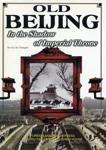
Old Beijing: In the Shadow of the Imperial Throne, Xu Chengbei, Foreign Languages Press,2001
240 pages. ISBN 7-119-02786-7 Details/purchase ➚
ISBN 7-119-02786-7 Details/purchase ➚ 




I was excited to find this book at the local Oxfam bookshop. It contains hundreds of archive black and white photographs of pre-1949 Beijing. Unfortunately the text is not brilliant and it lacks an index. As it is produced by a native Chinese enthusiastic about the subject there are many insights into life under the Imperial Qing dynasty that you will not find elsewhere. My other main quibble is the size of the book, as it is only A5 in size it is hard to appreciate the detail of the fine historic illustrations, they deserve to be reproduced at a larger size.
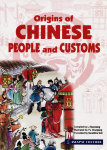
Origins of Chinese People and Customs, Li Xiaoxiang, Asiapac Books, 2008
150 pages. ISBN 978-9812293848 Details/purchase ➚
ISBN 978-9812293848 Details/purchase ➚ 




A short book using cartoons to demonstrate the origin of many traditions and customs. Most of these are concerned with marriage, child rearing and death. It lacks references and an index. The English translation is rather bland and the cartoons aimed at children. Even so there are many pieces of information not adequately covered elsewhere.

Passport to Peking, Patrick Wright, OUP Oxford, 2010
591 pages. ISBN 978-0199541935 Details/purchase ➚
ISBN 978-0199541935 Details/purchase ➚ 




In 1954 three delegations from the UK went to China. One was an offical Labour Party delegation including Atlee and Bevan. One was a cultural delegation including A.J. Ayer, Hugh Casson and Stanley Spencer. The third was a labour party/trade union including Barbara Castle and Bryn Roberts. They came to help celebrate five years of the PRC and represented a thaw in China-UK relations at a pivotal time just after the Korean War. This book goes into great detail but is focused on the UK delegates but not the Chinese side. It is based on a meticulous study of all the journals of the participants. An interesting glimpse into relations foreign with China in the early days of the People's Republic.

Poems of the Late T'ang, Various: translated by A.C.Graham, Penguin, 1977
173 pages. ISBN 0-14-044157-3 Details/purchase ➚
ISBN 0-14-044157-3 Details/purchase ➚ 


Tang dynasty poetry has for a thousand years been considered the zenith of this Chinese literary form. Poems read fresh and relevant even today. This collection includes seven poets including Du Fu and Du Mu. The excellent translations include notes that aid the reader in understanding the places and people mentioned.

Red China Today, Edgar Snow, Pelican, 1970
749 pages. ISBN 978-0394462615 Details/purchase ➚
ISBN 978-0394462615 Details/purchase ➚ 


Edgar Snow became a personal friend of Mao Zedong and Zhou Enlai. He is most famous for his first book 'Red Star over China' which documents the Long March and the foundation of the PRC. This follow-up book documents his visits in the 1960s with an extra chapter added later about the 1970s. He is extremely positive about the achievements of Communist China in breaking the bad habits of the dynastic period. He was condemned as a 'fellow traveler' who offered just propaganda, but in hindsight he wasn't too far wrong on many aspects of China.

Red Dust: A path through China, Ma Jian, Vintage, 2002
324 pages. ISBN 978-0099283294 Details/purchase ➚
ISBN 978-0099283294 Details/purchase ➚ 



Ma Jian is a noted 'dissident' artist who took part in the Tiananmen protests. This book recounts a tale of his eventful travel throughout China to try to discover himself. It is a warts and all exposee of 'modern' China in 1981. It is the sort of book you need to read to get some counterbalance to the government line. I think he set out to shock too much and portray China as a flawed system. It says much about the author but not very much about China.

Return to Dragon Mountain, Jonathan Spence, Quercus, 2008
332 pages. ISBN 978-0143114451 Details/purchase ➚
ISBN 978-0143114451 Details/purchase ➚ 



Jonathan Spence is renowned for his scholarly works on Chinese history. In this book he gives a detailed biography of the famous Ming historian Zhang Dai who saw the dynasty fall in 1644. After a life as a member of the rich, scholar elite of Ming China Zhang became an impoverished recluse under the Qing and spent many years writing a history of the Ming. The book starts off well but somehow runs out of steam towards the end. It gives a unique insight into life in late Ming China.

Revolution in a Chinese Village : Ten Mile Inn, Isabel and David Crook, Routledge and Kegan, 1959
190 pages. ISBN 0-7100-3393-1 Details/purchase ➚
ISBN 0-7100-3393-1 Details/purchase ➚ 


To understand how the Chinese Communist Party rose to power 1921-49 you need to know how their reforms brought the rural peasants to their side. Rather than rely on bland national statistics this in depth study looks at the individuals in one particular village and tracks the effects of the reforms. The series of fundamental reforms met with mixed success but eventually a more equitable and prosperous village was the end result. For critics of communism, this study will challenge deep-trenched antipathy - mistakes were made but people learned from them and the standard of living greatly improved.

River Town, Peter Hessler, John Murray, 2002
399 pages. ISBN 978-0719564802 Details/purchase ➚
ISBN 978-0719564802 Details/purchase ➚ 



This book tells the story of an American working as an English Literature student 1996-98 in Fuling - a small town on the Yangzi. This time period preceded the completion of the Three Gorges Dam. This is a book based on journal entries made at the time and is much more about the author than about the town. He makes very perceptive remarks and went the extra mile to understand ordinary Chinese people. However there is little structure to the book and could have been edited down without impairing it. There is also a distinct air of American cultural superiority that somewhat dissipated over the two years. A good book to really get to understand the concerns of Chinese people.

Routledge Grammar, Basic Chinese, Yip Po-Ching and Don Rimmington, Routledge, 1998
221 pages. ISBN 978-0415472159 Details/purchase ➚
ISBN 978-0415472159 Details/purchase ➚ 



If you want to go beyond speaking and writing 'tourist Chinese' you need a good grounding in Chinese grammar. This Routledge guide goes far beyond memorizing useful phrases and serves as an essential course if you want to speak Chinese well and understand Chinese text. All the Chinese is in both pinyin and characters. It does not include a dictionary section so you will need a separate dictionary in conjunction with the book.

Selected Stories, Lu Hsun, Foreign Languages Press ,1980
323 pages. ISBN 978-0393008487 Details/purchase ➚
ISBN 978-0393008487 Details/purchase ➚ 


The writings of Lu Xun had great impact in the Republican period. He was the pioneer of modern Chinese literature - written in the vernacular for ordinary Chinese people not just the educated elite. This collection of short stories is all very readable. He satirizes the ancient traditions and customs of dynastic China most famously in the 'True Story of Ah Q' which is included in this collection.

Siege at Peking, Peter Fleming, Oxford Univ Press, 1959
225 pages. ISBN 978-0195837353 Details/purchase ➚
ISBN 978-0195837353 Details/purchase ➚ 


A detailed and thorough telling of the plight of the foreign legations besieged in Beijing during the Boxer Rebellion. It is written by Peter Fleming, brother of James Bond author Ian Fleming. Careful research of many sources has produced a fairly complete picture of what happened in the legations. There is little about the Chinese side - documents did not survive. It was a unique event in world history and a fascinating read.

Social life of the Chinese, Justus Doolittle, Harper and Brothers, 1865
968 pages. ISBN 978-1539469803 Details/purchase ➚
ISBN 978-1539469803 Details/purchase ➚ 



This mammoth two volume was written by a Protestant missionary to Fuzhou in 1865. It is particularly useful to read of the customs and traditions in these relatively early days of contact. There is a lot of detail but his grasp of Chinese traditions although good was not entirely sound. The book was written for new missionaries coming to China and there are sections showing how the Christian message could be spread in China. It covers a wide range of topics: foot-binding, opium, gambling, festivals, marriage etc..

Son of the Revolution, Liang Heng; Judith Shapiro, Vintage, 1984
292 pages. ISBN 978-0394722740 Details/purchase ➚
ISBN 978-0394722740 Details/purchase ➚ 


A rare book that covers from the Cultural Revolution from the perspective of personal experiences of ordinary, poor people rather than the country's leadership. Each stage of the revolution affected the author and his family. He explores the many ways people coped with the upheavals. It is not eloquent descriptive writing and does become a little turgid in places. Essential reading if you want to trully understand the impact of the period 1966-76.
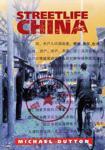
Streetlife China, Michael Dutton, Cambridge University Press, 2000
304 pages. ISBN 0-521-63719-8 Details/purchase ➚
ISBN 0-521-63719-8 Details/purchase ➚ 


This is a sociological study of China's urban communities. It is a collection of articles written by mainly Chinese writers about urban culture, how it has changed and how it is changing. It covers the transitional period of the 1980s with the drift away from Maoism and covers such things as slang, tattoos, work units - which you won't find anywhere else.
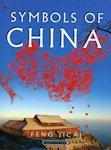
Symbols of China, Feng Jicai, Compendium, 2010
248 pages. ISBN 978-1849120180 Details/purchase ➚
ISBN 978-1849120180 Details/purchase ➚ 



A lavishly illustrated book covering all aspects of China not just 'symbols': traditions, scenic sights, festivals, arts, legends and famous figures. Unfortunately many of the descriptions are too short, just an overview and there are no references. At times the English is also rather poor. However it does give a very good overall coverage and the photographs and illustrations are lovely.
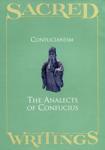
The Analects of Confucius, Confucius: translated by Arthur Waley, Quality Paperback Book Club, 1992
262 pages. ISBN 978-1135764364 Details/purchase ➚
ISBN 978-1135764364 Details/purchase ➚ 



If there is a Chinese book that gets close to a 'Chinese Bible' then this is it. It is essential to understand Confucius's philosophy if you want to understand China. The translation is old and uses Wade Giles and the notes require you to be a scholar to make sense of them. More recent translations are better than this one.

The book of Chuang Tzu, translated by Palmer and Breuilly, Arkana, 1996
320 pages. ISBN 0-14-019488-6 Details/purchase ➚
ISBN 0-14-019488-6 Details/purchase ➚ 


Many Westerners turn to the Dao De Jing to learn of the Daoist tradition. However it is the Book of Zhuangzi that gives a much more accurate reflection of the philosophy of Daoism. It is a series of entertaining, often amusing, tales that generally reveal a thought provoking paradox. It gives food for thought even in today's world. This translation is rather dated as it uses Wade-Giles but is otherwise admirable.
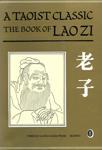
The Book of Laozi: A Taoist classic, Ren Jiyu, Foreign Languages Press, 1995
103 pages. ISBN 7-119-01571-0 Details/purchase ➚
ISBN 7-119-01571-0 Details/purchase ➚ 



There are many translations of the Dao De Jing (Tao Te Ching) and this is a fairly modern one produced by a Chinese scholar. I find the English adequate but it does not have the poetic ring of other translations. The nuances of translation are particularly hard to get right for this ancient classic. It does not include the original Chinese text.
Key to symbols used in the book descriptions
Note: More up-to-date editions of these books may well exist.
Many books cover more than one topic, these icons reflect all topics it may touch on.